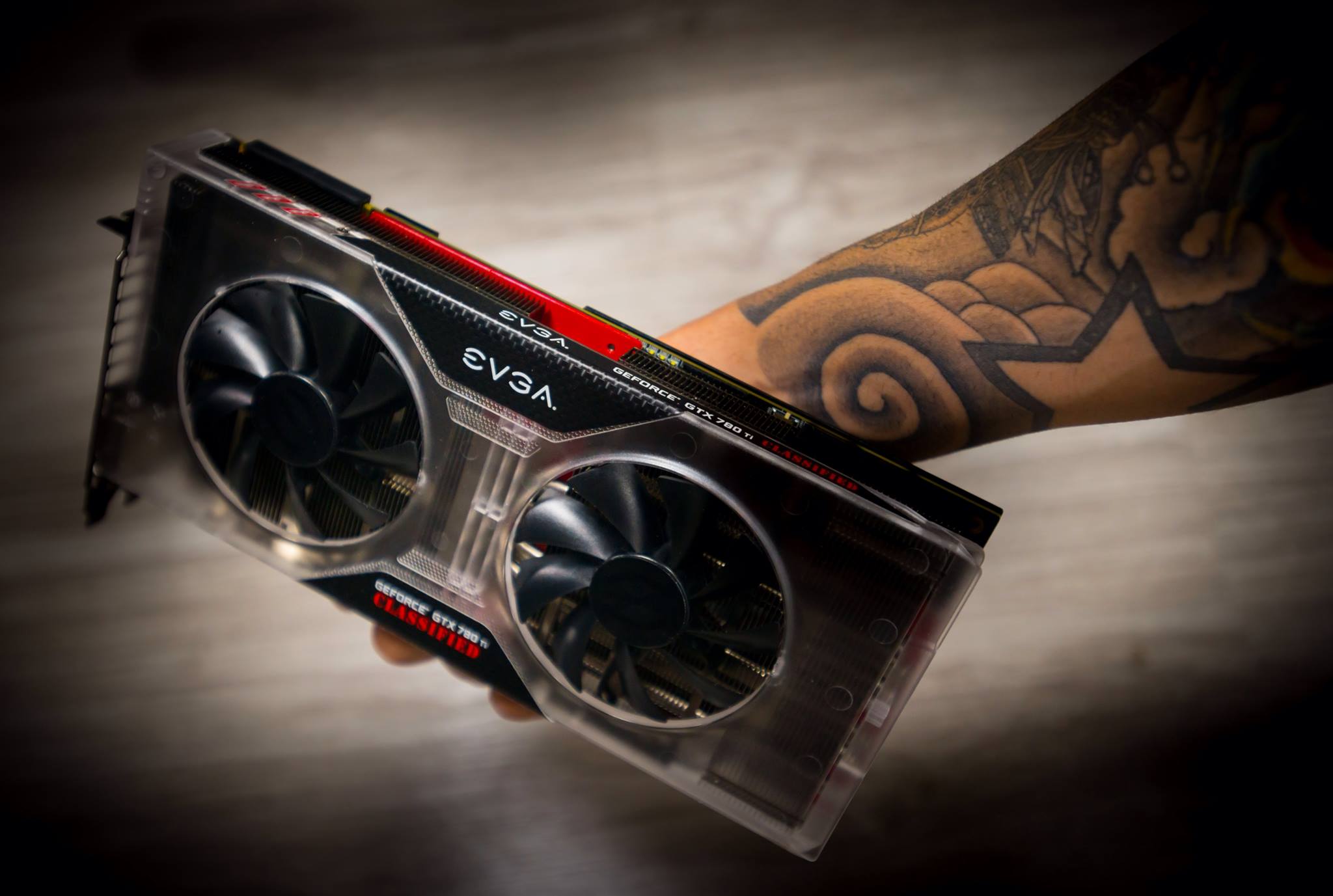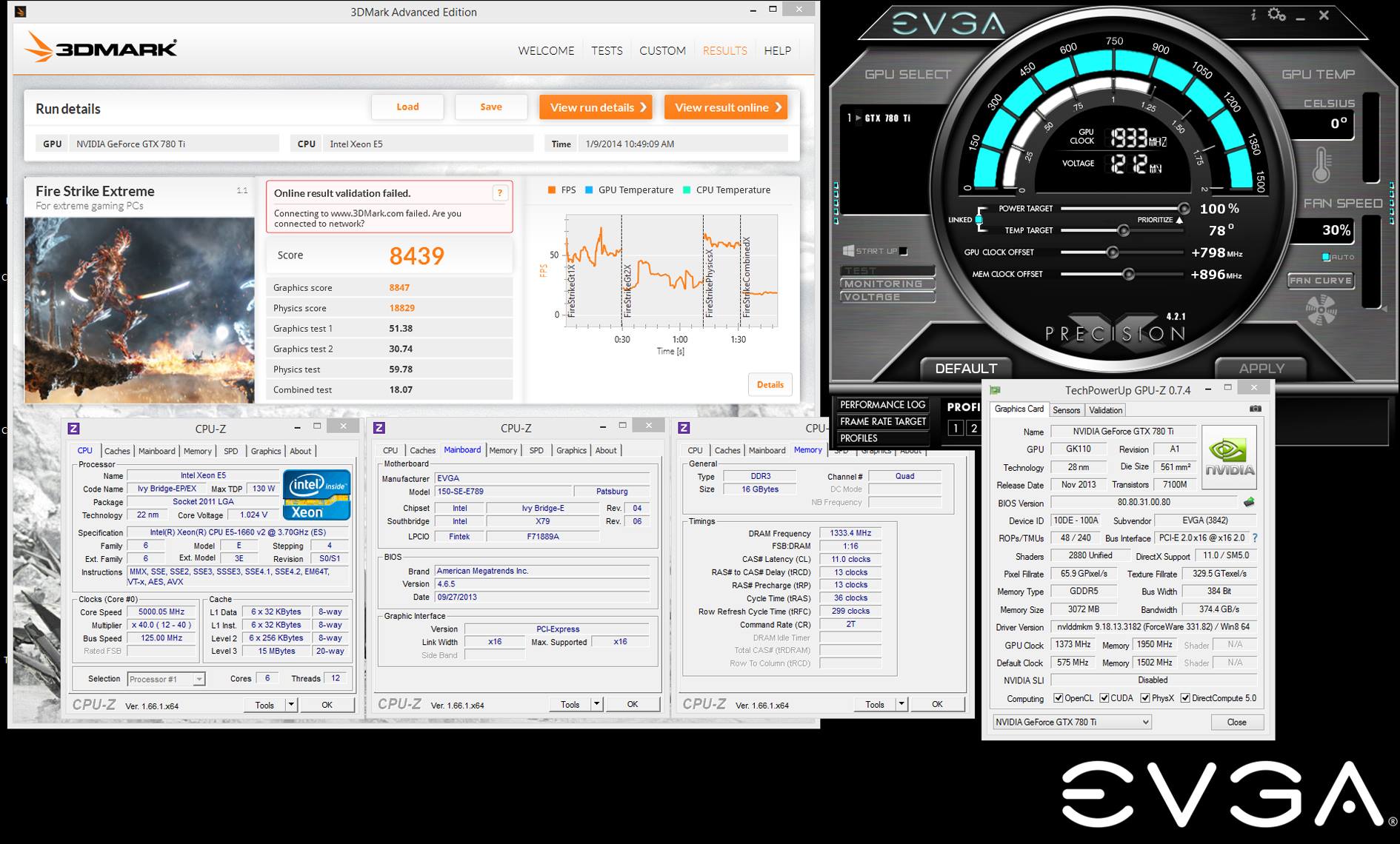GeForce GTX 780 Ti Overclocked to 1.9 GHz by K|NGP|N
EVGA's GTX 780 Ti classified K|NGP|N edition has been overclocked to a whopping 1.9 GHz. LN2 was harmed in the process.

Not long ago, word arrived that EVGA was working on its GTX 780 Ti Kingpin edition. Now, overclocker Kingpin, or "K|NGP|N" himself, got his hands on the card and went to work. The result was 1933 MHz on liquid nitrogen.
The GPU was run at 1.212 V, with the memory running at 7.8 GHz. The CPU that was used was an Intel Xeon E5-1660 that was overclocked to 5.0 GHz.

The EVGA GTX 780 Ti classified K|NGP|N edition (What a mouthful!) is a card that is built to be the overclocker's dream card, with no limit on the GPU voltage or the card's TDP. This lets overclockers take the hardware as far as physics will let it go and not be limited by the manufacturer. That said, undoubtedly warranties were probably void.
Get Tom's Hardware's best news and in-depth reviews, straight to your inbox.
Niels Broekhuijsen is a Contributing Writer for Tom's Hardware US. He reviews cases, water cooling and pc builds.
-
timbo1130 No sir not possible. you would first need a 3d 4k monitor which doesnt exist. second if it did a single card even clocked this high could not do it at a playable frame rate.Reply -
Novuake Mother of ...Reply
Now first off, no limit to TDP? WHAT?
Since when does Nvidia even allow this in a retail card? Or did I miss something with the introduction of Nvidia GPU Boost 2.0? -
palladin9479 Nvidia has nothing to do with it, they just make the chips. It's the manufacturer who has to put limits to such things as the clock generator and voltage generator. EVGA simply didn't implement any form of safety limiters as a nod for overclockers.Reply -
Novuake Reply12143658 said:Nvidia has nothing to do with it, they just make the chips. It's the manufacturer who has to put limits to such things as the clock generator and voltage generator. EVGA simply didn't implement any form of safety limiters as a nod for overclockers.
This makes no sense. To a degree does the manufacturer not have to conform to guidelines set by Nvidia?
Otherwise why would Nvidia almost give MSI the boot when they screwed with the GTX660ti / GTX670 Power Edition.
-
palladin9479 Reply12143683 said:12143658 said:Nvidia has nothing to do with it, they just make the chips. It's the manufacturer who has to put limits to such things as the clock generator and voltage generator. EVGA simply didn't implement any form of safety limiters as a nod for overclockers.
This makes no sense. To a degree does the manufacturer not have to conform to guidelines set by Nvidia?
Otherwise why would Nvidia almost give MSI the boot when they screwed with the GTX660ti / GTX670 Power Edition.
No they don't. Nvidia doesn't make the cards, they only make the GPU chips inside them. Nvidia then creates what's known as a "reference design" which is their standard board layout, power draw and voltage / clock configuration. Manufacturers are free to do whatever they want, they can design their own boards with different clocks and voltages and are thus responsible for any warranty claims involved. Also if a manufacturers design alters the performance characteristics such that it requires driver modifications, it's the manufacturers responsibility to develop those modifications, which is what notebook OEM's sometimes have to do.
EVGA has made several non-reference cards in the past. Hell my EVGA 780 Hydro's aren't reference design and are clocked much higher then the reference design. Same with their Classified edition cards. -
Novuake Reply12143713 said:No they don't. Nvidia doesn't make the cards, they only make the GPU chips inside them. Nvidia then creates what's known as a "reference design" which is their standard board layout, power draw and voltage / clock configuration. Manufacturers are free to do whatever they want, they can design their own boards with different clocks and voltages and are thus responsible for any warranty claims involved. Also if a manufacturers design alters the performance characteristics such that it requires driver modifications, it's the manufacturers responsibility to develop those modifications, which is what notebook OEM's sometimes have to do.
EVGA has made several non-reference cards in the past. Hell my EVGA 780 Hydro's aren't reference design and are clocked much higher then the reference design. Same with their Classified edition cards.
Really dude? REALLY? :pfff:
You are kind of missing the point I am trying to make? Not to mention you are telling me things that are about as complicated as a potato...
I know exactly what you are saying, but WHY would NVIDIA give MSI crap over that incident if the vendors are free to do what they want with the chips sold to them?
Geez I hate being treated like an idiot when I try to make a valid point.
